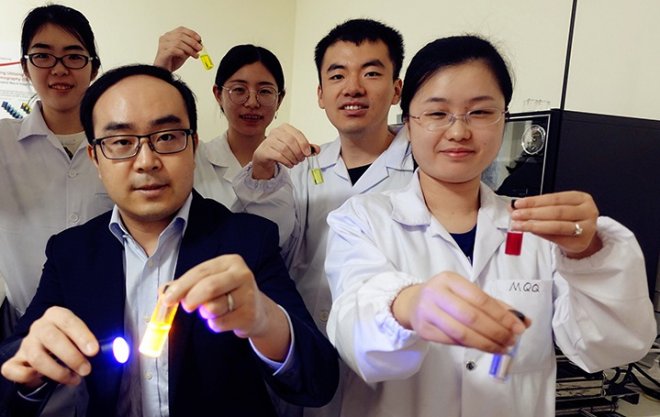
A team of researchers at the Nanyang Technological University, Singapore have developed polymer nano-agents capable of illuminating tiny areas of disease affected tissues that conventional methods often fail to detect. The nano-agents which are known as semiconductor polymer nanoparticles store light energy from sources such as sunlight and will emit long-lasting 'after-glow' light.
The future is nano-agents
The nano-agents developed by the Singapore research team are capable of tracking down and locking onto diseased tissues in the body such as cancerous cells, sending back near-infrared signals which can be received and interpreted by a standard imaging equipment. This development is expected to give more time for doctors to analyze the disease affected spot, as the nano-agents continue self-illuminating, and the light intensity will start fading by half only after six minutes.
"Alternatively, if stored at -20 degree Celsius, the sample will maintain its results for a month, making it convenient for other diagnostic experts to interpret and review the results at a later time. When tested in mice, the method provided results 20 to 120 times more sensitive than current optical imaging methods and 10 times faster in showing up diseased tissues," said the Nanyang Technological University.
According to medical experts, the new development will create positive impacts on image-guided surgery, and in monitoring the effects of drugs that are seeking regulatory approval on the human body.
Associate Professor Pu Kanyi who led the research team said that the new polymer agents developed can detect diseased tissues much faster than conventional imaging techniques, and are also considered safer to use.
"We hope this may lead to technology that allows doctors to diagnose and treat patients much earlier than is possible at present. Potential use may be in image-guided surgery, where surgeons could use the technology to help them precisely remove diseased tissues in real-time, and in monitoring the effects of drugs that are seeking regulatory approval," said Pu Kanyi.
Crucial role in drug development
The new discovery can play a crucial role in determining the effects of various drugs on the human body. Now, drug-related studies are being carried out of the human body in a controlled environment. The existing technique working in the tissue level has low predictive power on the way in which a drug reacts in the body.
On the other hand, the new technology works on a molecular level, and it is capable of monitoring increased or decreased levels of biomarkers which will help to determine how the drugs are working on the human body before their therapeutic action is complete. Researchers believe that it will provide much predictive power during the process of drug development.









